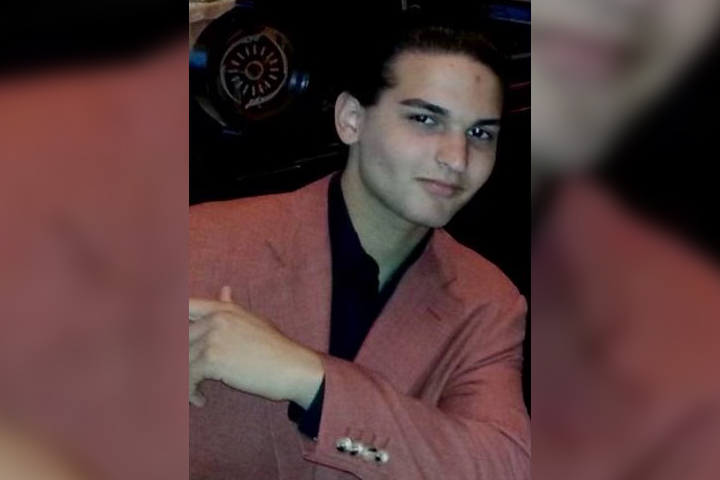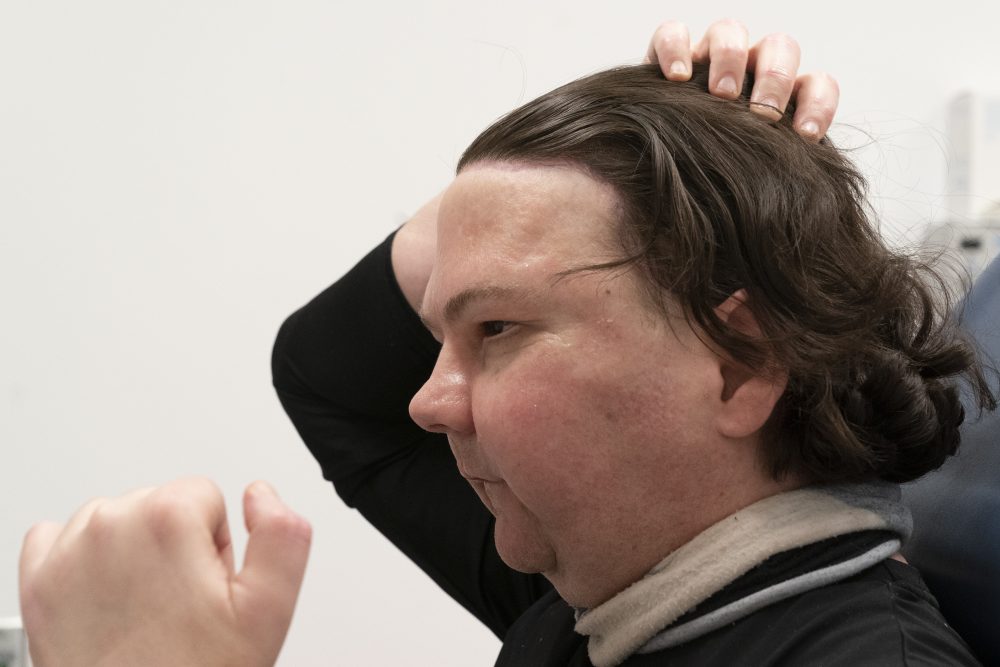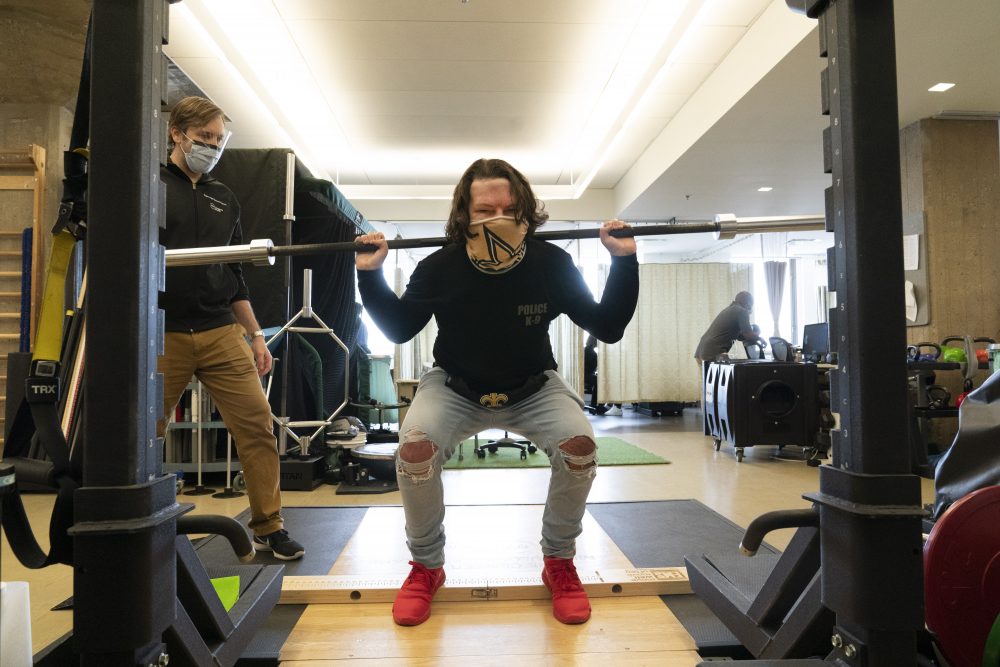NOTE: This story contains photos and descriptions of a medical nature that some might find graphic. Please read at your own discretion.

A New Jersey man is slowly learning how to use a face and hands that once belonged to a stranger, some six months after they became his own in a historic transplant operation.
Joe DiMeo, 22, is only the third person ever to receive a face and double hand transplant, and doctors say he is the first to ever successfully accept all three.
DiMeo has learned to feed and dress himself since receiving the transplants last August, and he’s now learning how to blink, smile and raise the eyebrows on his new face. He’s also working on pinching, squeezing and offering a thumbs up with his new hands.
“I knew it would be baby steps all the way,” he told The Associated Press in a recent interview. “You’ve got to have a lot of motivation, a lot of patience, and you’ve got to stay strong through everything.”
It’s been a major comeback journey for DiMeo, whose life was upended in a severe car accident in 2018. He was driving home from a night-shift job at the time when his car struck a curb, hit a telephone pole, flipped over and burst into flames.
Another driver hauled DiMeo out of the wreck but not before he suffered horrible third-degree burns on 80 per cent of his body. Doctors put him into a medically induced coma for several months while they performed several skin grafts and 20 reconstructive surgeries to save what they could.
DiMeo’s doctors eventually accepted that they would never be able to restore his full vision or use of his hands, so they opted to pursue a more dramatic option: transplants.

Get weekly health news
Surgeons have completed at least 18 face transplants and 35 hand transplants worldwide, according to the United Network for Organ Sharing (UNOS), which oversees the U.S. transplant system. However, only two other teams have ever tried to do a face and two hands at once — and neither one was fully successful.
“Within the world of transplantation, they’re probably the most unusual,” Dr. David Klassen, the chief medical officer for UNOS, told the AP.
The first such transplant happened in France in 2009, and the patient died of complications after about a month.
The second patient was Charla Nash, an American who had been mauled by a chimpanzee, and her operation took place in 2011. She ultimately kept the face but her body rejected the hands within a few days.
DiMeo’s doctors began their search for a donor in 2019 but did not find one until August of 2020, in part due to pandemic-related distractions. However, once they had a donor, the whole process came together quickly.
“The possibility of us being successful based on the track record looked slim,” said Dr. Eduardo Rodriguez, who led the NYU Langone medical team of more than 140 people. “It’s not that someone has done this many times before and we have a kind of a schedule, a recipe to follow.”
Surgeons amputated both of DiMeo’s hands, then replaced them at the mid-forearm. Each hand had to be connected via nerves, blood vessels and tendons using hair-thin sutures.
Next, Rodriguez and his team went through the process of transplanting the entire face, including eyebrows, nose, eyelids, lips, ears and all the underlying facial bones.
The whole process played out in a 23-hour operation, and it’s held up to date.
“Joe was an ideal candidate for this procedure,” Rodriguez said in a new release from NYU Langone. “He’s extremely motivated and dedicated to recovering the independence he lost after his accident.”
Dr. Bohdan Pomahac, a Boston-based surgeon who performed the last such operation in 2011, said he is impressed by the results.
“The fact they could pull it off is phenomenal,” he told the AP. “I know first-hand it’s incredibly complicated. It’s a tremendous success.”
It was Rodriguez’s fourth time overseeing a face transplant, and his first time directing a hand transplant.
“Fundamentally, I viewed this as the same type of surgical exercise as our previous successful face transplants,” Rodriguez said.
DiMeo must take medication for the rest of his life to prevent his body from rejecting the transplants. The medication also makes him more vulnerable to infection, and there will always be a risk that his body will suddenly reject the face or hands.
“You’re never free from that risk,” Klassen of UNOS said. “Transplantation for any patient is a process that plays out over a long period of time.”
Rodriguez says he’s very pleased with the way DiMeo has taken to his new transplants so far, and there has been no sign of rejection to date.
“It’s very gratifying to all of us,” Rodriguez said. “There’s a tremendous sense of pride.”
DiMeo says he’s tried to resume his life as much as possible since leaving the hospital in November. He lives with his parents, but he’s been slowly getting used to doing things for himself. He’s also had plenty of intense rehabilitation sessions on his calendar, which include several hours each day of physical, occupational and speech therapy.
“Rehab was pretty intense,” he said. He added that the tough part is “retraining yourself to do stuff on your own again.”
The former gym rat is back to lifting weights, and he’s also started shooting pool, practising his golf swing and playing with his dog. Those are the little things that keep him going after his long road to recovery.
“You got a new chance at life,” he said. “You really can’t give up.”
—With files from The Associated Press
- U.S. removal of panels on Black WWII soldiers in Netherlands draws backlash
- More artists cancel Kennedy Center shows after addition of Trump’s name
- Thieves drill into German bank vault, steal tens of millions in cash, valuables
- New dashcam video may show missing Texas woman who disappeared on Christmas Eve














Comments